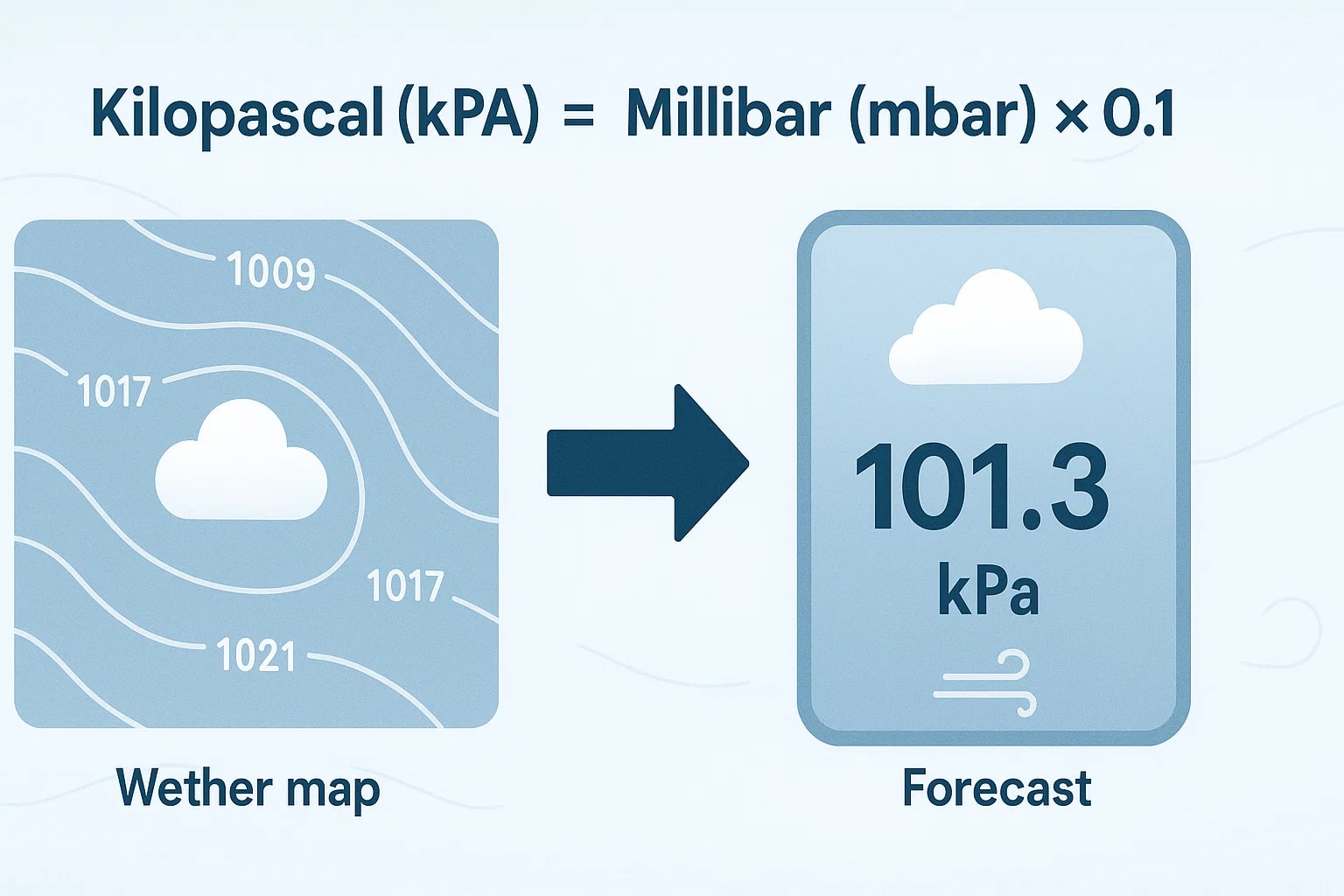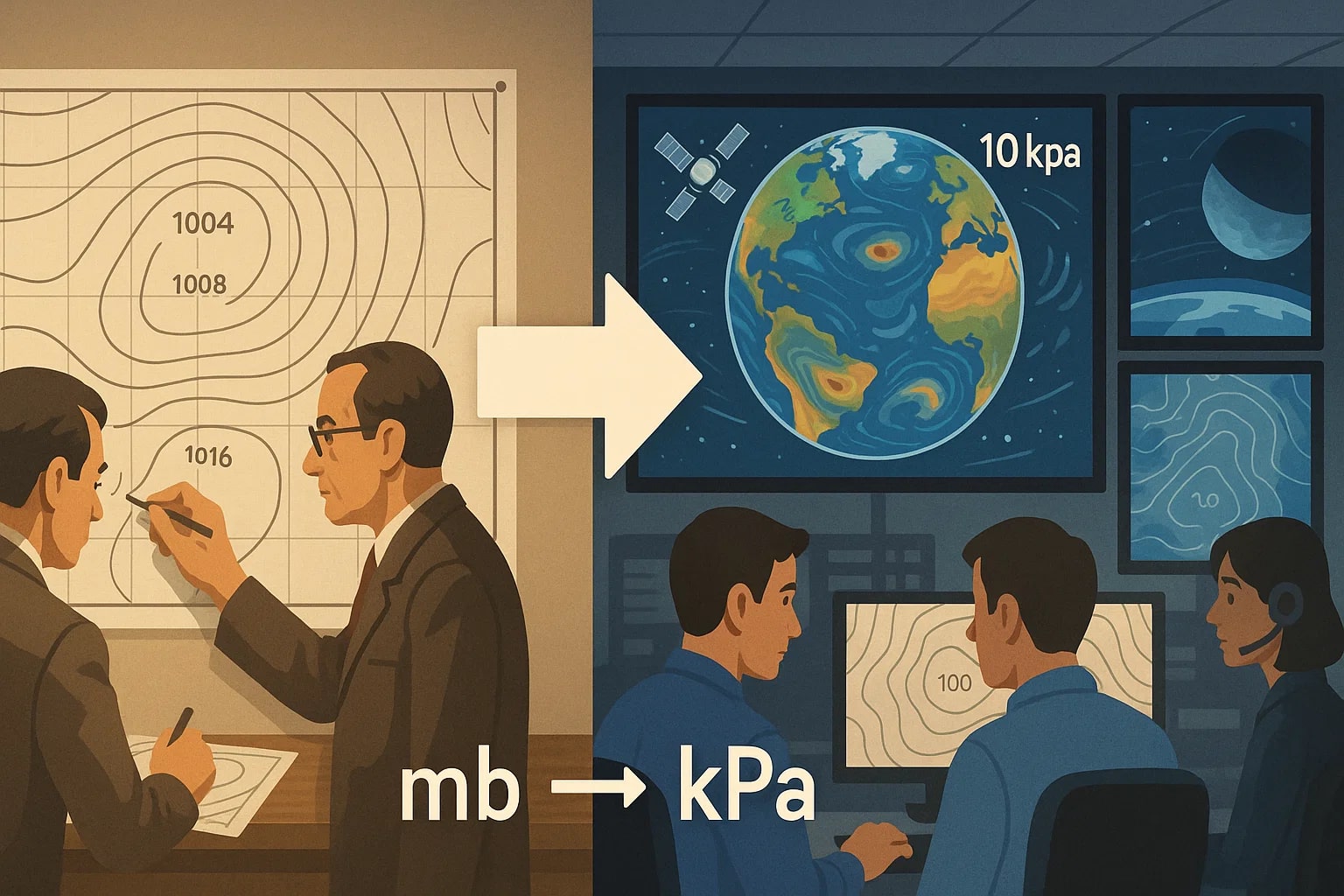millibar to pascal – How to convert mbar to Pa
The millibar (mbar) is commonly used in meteorology, while the pascal (Pa) is the SI base unit for pressure across science and engineering. Converting millibar to pascal allows weather data, scientific research, and technical calculations to be unified under the same system.

What is a millibar (mbar)?
A millibar equals 100 pascals. Meteorologists often express atmospheric pressure in millibars. Sea-level standard pressure is about 1013 mbar.
What is a pascal (Pa)?
A pascal is the SI unit of pressure, defined as one newton per square meter. Though it represents a small value, it is the universal foundation for all pressure-related measurements.
How to convert millibar to pascal
Pascal (Pa) = Millibar (mbar) × 100
Example:
Pascal = 1013 mbar × 100 = 101,300 Pa
For instant results, try the Conversion Tools. You can also explore helpful tools like the Speed Converter for other calculations.
Do you know?
-
About millibar: The lowest central pressure recorded in a tropical cyclone was 870 mbar during Typhoon Tip (1979), a benchmark in meteorology.
-
About pascal: Atmospheric pressure at sea level is about 101,325 Pa — equivalent to 1013 mbar. This link makes the conversion especially easy in weather science.
Weather Forecasts Go Global
During the 20th century, meteorologists in Europe and the U.S. relied heavily on millibars. But as international cooperation on climate and forecasting grew, the SI system pushed for pascal as the standard. To ease the transition, many weather services began publishing data in both mbar and Pa, allowing scientists and the public to adapt gradually.
This dual reporting not only unified weather data but also helped create the consistent global forecasting networks we depend on today. Every time we convert millibar to pascal, we’re participating in a worldwide effort to keep data standardized and reliable.

A Conversion That Anchors Science
Converting millibar to pascal is simple: multiply by 100. But its importance stretches far beyond the math. From storm tracking to laboratory experiments, this conversion ensures that one small unit can anchor the biggest scientific systems. Whether you’re watching a hurricane warning or studying fluid dynamics, mbar to Pa ties it all together.

